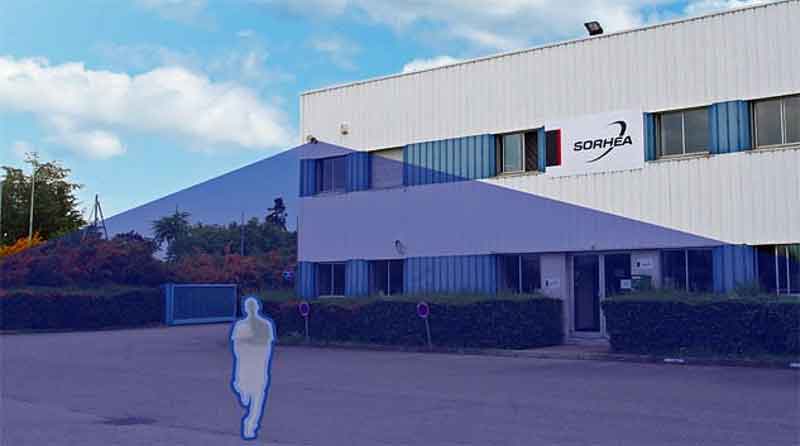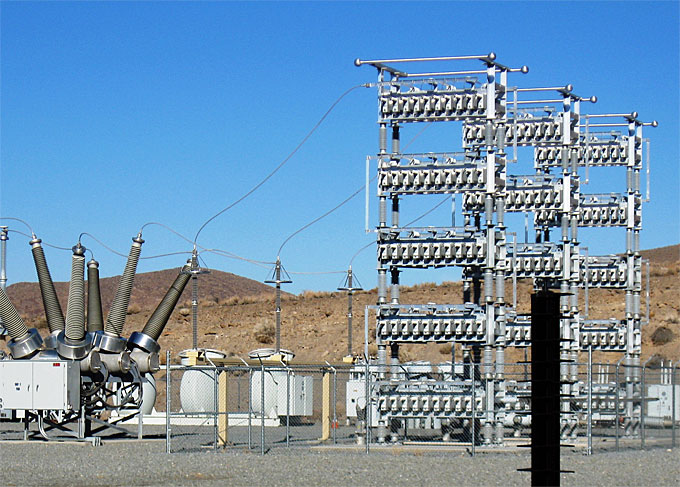
By Cathy McHugh, PROTECH
When it comes to protecting the perimeters of highly sensitive sites, not all technologies are the same.
Perimeter Intrusion Detection Systems (PIDS) range from:
- Infrared beams (invisible fences)
- Fence-mounted intrusion detection systems (to give advance warning of cuts, climbs or lifts on fences or walls)
- Dual technology motion sensors (providing simultaneous technologies to detect motion with immunity to birds and moving objects like trees)
- Microwave barriers (creating a line of site volumetric detection zone that alarms when someone passes through)
- Video analytics (to detect motion and tracking)
- Radar (for extremely wide area surveillance)
- Drone technologies (for top view surveillance), and of course
- A full range of CCTV cameras that provide verification of an intrusion once accurately detected by a perimeter detection technology
The goal of outdoor perimeter security is to provide advance warning, enhance overall situational awareness and improve response times of security staff.
Effectively deployed, perimeter security systems extend the physical perimeters of sites so breaches are identified in advance of an event.
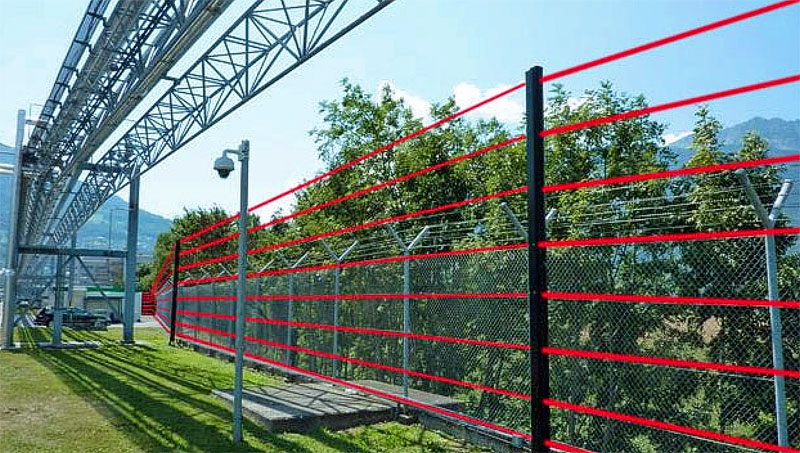
Cameras alone cannot do the job as video footage is typically reviewed post event.
Intrusion detection through perimeter security technologies gives that all-important “heads-up” when something is about to occur.
CHOOSING THE MOST APPROPRIATE SYSTEM
How do the people responsible for the physical protection of people, property and assets choose the most effective technology given the application?
A layered approach is one PROTECH recommends so all areas of a perimeter is covered, including gaps such as gates and blind spots that may be missed by cameras.
Layering ensures that if one technology misses an intruder, another technology will capture it.

A combination of perimeter intrusion detection and tracking technologies will best serve security personnel in providing the most robust perimeter protection.
PROTECH offers a full range of perimeter intrusion detection technologies, some of which feature multiple detection technologies in the same product: Piramid combines passive infrared with microwave and APIRIS is a triple technology IR Barrier.
In choosing the most appropriate technologies for perimeter protection, security managers and directors should consider the following:
-
What is the potential threat faced?
- e.g. Climber, cutting the fence, fast moving vehicle, etc.
-
What level of security does your site require?
- For example, a military base or government site has a different level of risk compared to a car dealership for example.
- The technical solution is based on the level of security required.
-
What physical deterrents, if any, exist today?
- For example, an existing fence line that a detection system can be applied to or no fence at all perhaps due to the need of maintaining aesthetic integrity but still requiring high security.
- The site’s landscape, layout and environmental conditions are also important.
-
Existing infrastructure?
- To keep costs down, choosing technologies that integrate to existing systems is critical.
- Communications between those accountable for physical security and IT departments will ensure finite integration among systems.
-
Deployment and maintenance?
- There are intrusion detection technologies that are cheaper to purchase but are more expensive to install and maintain.
- For example, newer and more advanced technologies from PROTECH, offer wireless and solar-powered options which drastically reduce installation and maintenance time because no underground cabling is required and they have web-based maintenance.
- This will reduce the overall cost and Total Cost of Ownership.
- There are intrusion detection technologies that are cheaper to purchase but are more expensive to install and maintain.
-
Integration?
- With multiple technologies protecting the perimeter, centralized monitoring is critical so having a headend, like PROTECH’s Maxibus and soon to be introduced CONNECT module, one interface can manage all incoming PROTECH surveillance technologies.
- Open protocols are also becoming the norm so choosing manufacturers that can communicate with alternative head-ends (other than only their own) allows for easy management of surveillance systems, regardless of manufacturer.
- With multiple technologies protecting the perimeter, centralized monitoring is critical so having a headend, like PROTECH’s Maxibus and soon to be introduced CONNECT module, one interface can manage all incoming PROTECH surveillance technologies.
-
Made in America?
- If Made in America is important to your organization, be sure to ask where the products/systems are manufactured and repaired.
- This will also impact delivery and maintenance schedules.
- If Made in America is important to your organization, be sure to ask where the products/systems are manufactured and repaired.
-
Manufacturer innovation?
- Are you using or considering the latest technologies? Physical security and perimeter systems, for the most part are aging and not all manufacturers are keeping up with the latest in technology.
- Traditionally, perimeter security required an extensive design skill set in civil trades to cover needs for remote power, poles for lighting and mounting cameras and communication infrastructure such as switches and routers which is costly in terms of labor for installation time to meet deployment timeframes.
- Are you using or considering the latest technologies? Physical security and perimeter systems, for the most part are aging and not all manufacturers are keeping up with the latest in technology.
-
PROTECH’s solar-powered and wireless systems reduce the need and cost of this once infrastructure intensive solution.
-
PROTECH’s latest technologies offer seamless integration and bring disparate systems together, through a software platform.
‘ASTOR’ AWARD WINNING TECHNOLOGY

-
PROTECH USA
- Gold ‘ASTORS’ Award Winner
- Solaris Active Infrared Beam
- Best Perimeter Protection Solution
PROTECH recently received the 2017 ‘ASTORS’ Gold Award for Best Perimeter Security System by American Security Today – for Solaris, a solar-powered, active infrared beam technology that is being deployed around the world, in various government installations.
This technology can cover miles of perimeter with little to no infrastructure – the value proposition is exceptional and the total cost of ownership has been greatly reduced.
(See PROTECH’s SOLARIS high security wireless infrared barrier in action. Courtesy of SORHEA and YouTube)
SOLARIS Active Infrared Beam
The SOLARIS self-contained infrared barrier columns form a “virtual” (invisible) wall/fence to detect unwanted intrusions.
Powered by a solar panel and highly efficient integrated battery, installation requires little to no civil engineering.

Communication occurs through a dynamic radio mesh network (through proprietary protocol) to and from all SOLARIS columns that transmit alarm information reliably and efficiently.
This communication uses the highly secure Advanced Encryption Standards (AES 256).
Each SOLARIS column integrates a powerful radio transmitter/receiver with low power consumption.
When the infrared barrier sensor detects an intrusion, alarm information is collected by all nearby infrared columns that retransmit information automatically.
The alarm message is relayed to a radio coordinator connected to the MAXIBUS 3000 hub.
The alarm center receives an intrusion alert notification.
In the event that one SOLARIS column is missing (or down) in the network, an alert is triggered for notification, acting like a watchdog for individual column status reporting.
Solar-powered, Wireless Infrared technology for perimeter protection features include:
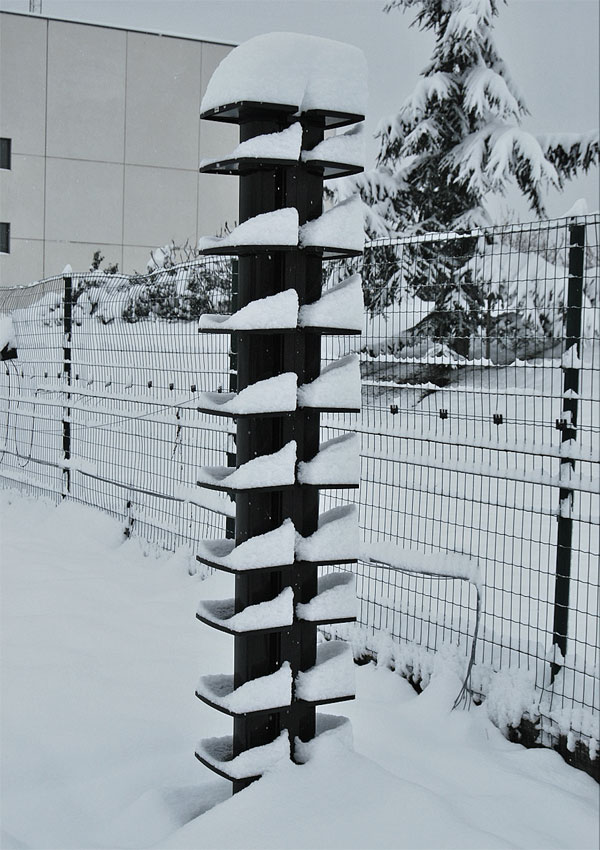
- EASY INSTALLATION: Independent barrier, no civil engineering or cabling required, columns are bolted to concrete block – operational in minutes
- RELIABILITY: Communication through secure radio protocol. High probability of detection. Patented design anti-condensation / anti-ice caps prevent the formation of ice and condensation on IR cover – exceptional performance in all weather conditions
- INNOVATION: 1st autonomous, long-range 300 feet (100m) infrared barrier in the industry
SOLARIS is an ideal solution for sites that require high-security perimeter surveillance with minimal infrastructure, cost-effectively:
- Utilities / Sub-stations / Control centers
- Nuclear plants
- Correctional facilities as a secondary layer of perimeter protection
- Logistics sites / storage and warehousing
- Car dealerships
- Industrial complexes, etc.
SOLARIS is being used throughout the world at highly sensitive sites required advance warning of unwanted attacks and threats.
G-FENCE
For sites with an existing fence line on the perimeter, PROTECH offers G-FENCE which is an accelerometer based technology (operating on an x/y axis) that detects shifts in the fence and can distinguish between cuts, climbs and lifts of the fence.
(G-FENCE 3000 is a fence shock detection system for the protection of sensitive sites. Courtesy of SORHEA and YouTube)
It is superior to copper (microphonic) or fiber-based technologies because the system “intelligence” is in the accelerometer, not the cable so if a cable is cut, it can be repaired very easily and finding the location of the cut is faster as there is one accelerometer every 10 feet of cable.

G-FENCE comes in both wired (relay output) and solar-powered (with back-up battery) models, depending on the application.
Both can be installed and running in hours as opposed to days, cutting down on installation and infrastructure costs (no need for wiring in the 3000 model).
GOVERNMENT APPLICATIONS OF PROTECH TECHNOLOGIES
PROTECH’s technologies are at test sites and being deployed at both Department of Energy (DOE), and U.S. Air Force (USAF) facilities, along with other commercial global applications in utilities, nuclear, corrections, and military markets.
THE FUTURE OF PERIMETER SECURITY
PROTECH, through its parent organization, invests 8% of turnover annually into R&D and exciting new technologies are in the development stages.

Through acquisitions, PROTECH and its sister companies now provide an end-to-end perimeter security solution so that a layered approach can be achieved through one supplier.
It also means that all technologies are working together in harmony.
PROTECH’s parent company SORHEA, was a pioneer manufacturer in perimeter security to offer infrared and fence-mounted systems powered by solar energy.
Do not mistake this energy source as one limited to sunlight.
Solar energy is about light powering the system, not simply the sun and these technologies have long-time battery back-ups along with wired options, and embedded heaters to address extremely cold environments.
As for technology development, radar and wireless technologies will continue to emerge and develop, working in harmony and on the forefront, PROTECH is one of few in this class.
Made in the USA, Piramid, a dual-technology sensor has a 30-year+ history and is the only product of its kind featuring two technologies in one sensor (Doppler microwave and passive infrared).
This ensures an alarm will not happen unless both technologies are tripped together.
(Learn More about PIRAMID LT, a Volumetric Motion Detector for protection of service scales. Courtesy of SORHEA and YouTube)
The next generation of this product, Piramid Connect, being launched this spring, embeds a radar technology and allows for connection, deployment and management through smart phones.
While DRONE technologies are beginning to capture market share, they will still need to integrate into existing systems and organizations, and will need to face the challenges of deploying drone technologies with regard to air space and privacy.
NEW CHALLENGES AND TRENDS
With regard to privacy, we are confident government legislation pertaining to data protection is on the horizon.
Sanctions with regard to General Data Protection Regulations (GDPR) are a reality in Europe, and will become a reality in North America. PROTECH is preparing towards that end.
The European Union’s GDPR brings data protection legislation in line with previously unforeseen ways in which information is used today, and applies to most organizations in the EU handling personal data.
In short, government legislation will change the way in which companies are able to market and sell their security systems, outside of face-to-face contact.
These are indeed exciting times in the world of security, perimeter security in particular, and ‘ASTORS’ Award-Winning PROTECH is not only on the cutting edge of new technology development and deployment, but promises to be the manufacturer to watch in the next five years.
PROTECH has its eyes set on being the world leader in the industry.
ABOUT THE AUTHOR

Cathy McHugh is the Marketing Manager for US-based manufacturer PROTECH (Protection Technologies, Inc.), and long-time marketing expert in the security industry.
McHugh has worked as Global Marketing Director for DVTEL (now FLIR) and Canadian-based Senstar.
PROTECH is a member of France-based ST Group, comprised of SORHEA Technology (responsible for research and development and manufacturing), PROTECH USA sister company, Montreal-based PROTECH-VIDEOWAVE (video analytics software developer and the Canadian sales and operations organization of PROTECH), France -based TIL Technologies (an access control software developer and manufacturer) and France/Belgium-based Eurocloture Security (an electronic detection fence manufacturer).
PROTECH Wins in 2017 ‘ASTORS’ Homeland Security Awards Program
AST focuses on Homeland Security and Public Safety Breaking News, the Newest Initiatives and Hottest Technologies in Physical & IT Security, essential to meeting today’s growing security challenges.
The Annual ‘ASTORS’ Homeland Security Awards Program, is organized to recognize the most distinguished vendors of Physical, IT, Port Security, Law Enforcement, Border Security, First Responders, (Fire, EMT, Military, Support Services Vets, SBA, Medical Tech) as well as the Federal, State, County and Municipal Government Agencies – to acknowledge their outstanding efforts to ‘Keep our Nation Secure, One City at a Time.’
To Learn More about the ‘ASTORS’ Homeland Security Awards Program, see 2017 ‘ASTORS’ Homeland Security Award Winners Honored at ISC East.
Over 100 distinguished guests from National, State and Local Governments, and Industry Leading Corporate Executives from companies allied to Government, gathered from across North America and the Middle East to be honored from disciplines across the Security Industry in their respective fields which included:
- The Department of Homeland Security
- The Department of Justice
- The Security Exchange Commission
- State and Municipal Law Enforcement Agencies
- Leaders in Private Security
Recognized for their Innovative Training and Education Programs, Outstanding Product Development Achievements and Exciting New Technologies to address the growing Homeland Security Threats our Nation is facing.
Nominations are now being accepted for the 2018 ‘ASTORS’ Homeland Security Awards at https://americansecuritytoday.com/ast-awards/.
American Security Today will be holding the 2018 ‘ASTORS’ Awards Presentation Luncheon to honor Nominees, Finalists and Winner in November 2018, in New York City.
For ‘ASTORS’ Sponsorship Opportunities and More Information on the AST 2018 ‘ASTORS’ Homeland Security Awards Program, please contact Michael Madsen, AST Publisher at: mmadsen@americansecuritytoday.com or call 732.233.8119 (mobile) or 646-450-6027 (office)
Since 1980, PROTECH has been designing, manufacturing and marketing perimeter intrusion detection systems to protect personnel, property and assets at sensitive sites.
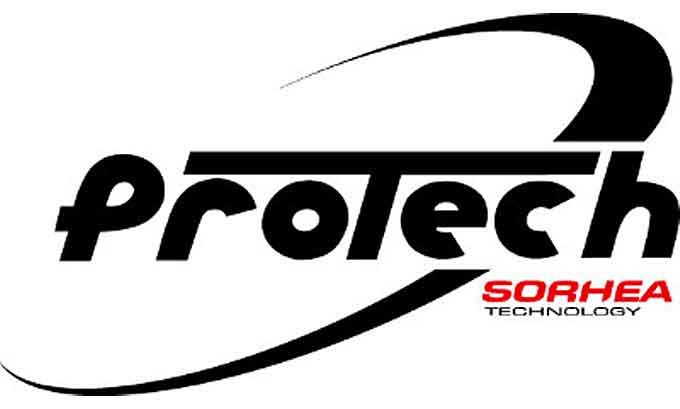 PROTECH manufactures systems that give early warning of potential threats at the perimeter, for example, detecting an intruder before they are able to access a building or facility.
PROTECH manufactures systems that give early warning of potential threats at the perimeter, for example, detecting an intruder before they are able to access a building or facility.
Click here to learn more about the Solaris Active Infrared Beam. To learn more about PROTECH, please visit the company’s website at http://www.protechusa.com.















